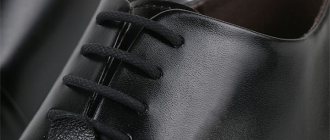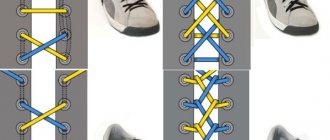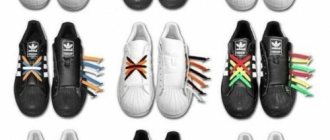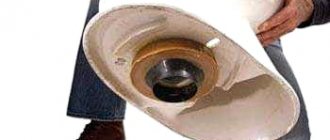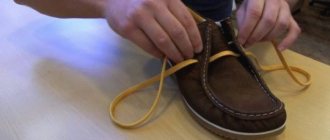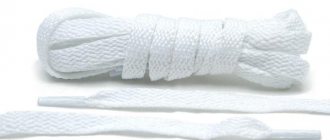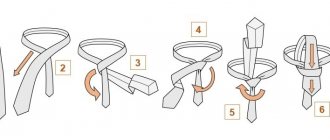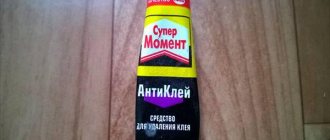The most common type of footwear used for everyday wear is sneakers. They are used not only for sports, running and hiking, but also for wearing to work. Various and interesting lacing options will help make the appearance of your sneakers unusual and inimitable. Tying shoelaces, as you know, is a simple matter, however, by paying a little more attention to the process and studying photo and video diagrams, you will get not traditional straight lacing, but a very creative option.
Unusual and original ways
Knowing how to tie shoelaces in a non-standard way, as well as different types of lacing, you will be able to independently make your sneakers even more stylish. The lacing methods differ from each other, they can be changed even daily, adding your own “zest” to the image.
Checkered
Shoes laced with a checkered pattern look unusual and inimitable.
Lacing technique:
- The first cord is led through the lower holes with the eyelets inward.
- The second one is carried out from below, thus completing the “weaving binding” to the top, wrapping it around the first one and going further down.
- They do this until the cord runs out. The knot is hidden inside the sneaker.
Lightning
This is an unusual way to tie shoelaces. It is preferred by hockey players and figure skaters because it perfectly fixes the leg and looks very beautiful. This pattern looks most impressive if you use high-top sneakers or boots.
Lacing instructions:
- First you need to insert the laces into the lower holes from the inside.
- Cross the edges and thread them through the next holes.
Railway
This method looks original and is good for thin laces, since they are threaded through the hole twice. Begin lacing from the bottom, threading the eglets from the inside. Then they go parallel upward, threaded inside, pulled out and intertwined. Then there are vertical “strokes” again.
Reverse two-color loop
This is another lacing method using two cords, the ends of which are tied into a bow. Lacing technique:
- Take 2 shortened laces (red and blue).
- Pass the red through the bottom, leading out.
- Make a cross and pass the rope through the eyelets through the aiglet above.
- Continue lacing, skipping a few holes.
- Take the blue cord and start manipulating with the 2nd pair of eyelets, repeating steps 2 and 4 until the tip of the red one matches the blue one.
Five pointed star
You can tie your shoelaces creatively using this lacing option. The order is:
- The first line is made in the middle row, then the edges on the inside move perpendicularly down, cross, and return to the original row.
- Thread diagonally through the lower eyelets, forming a five-pointed star.
Tightened loops
Lacing will especially appeal to young and creative girls. Technique:
- Starting from the top, the rope is threaded into the 2nd eyelet.
- The aiglets are threaded right and left in order, resulting in long loops on the outside.
- At the bottom there should be one eyelet on one side and the other.
- Thread the aiglets into the resulting loops on both sides (see step 2) so that they look out.
Chess
This method involves using two pairs of laces, different in color. Take flat and wider laces, so the checkerboard will look more interesting. Technique:
- Thread lace A through the first holes from inside the boot. One end of the lace is short - it is required for the knot. Work is carried out with the second end.
- Pass the second eyelet into the 2nd eyelet from the inside, then from the outside into the hole opposite. Tuck the cord end B under the shoe trim near end A.
- Draw parallel lines with lacing to the very top.
- Pull cord B down, threading it alternately over and under A.
- Make a couple more waves with cord B, raise and lower it.
- Bring the eglet under the edge of the shoe near the first hole.
Rhombus
This traditional technique allows you to make patterns not only in the form of geometric shapes, in particular, a rhombus, but also other ornaments. It all depends on where the edges of the laced ropes intersect. The knots can be hidden or left outside.
Spiral
This is an easy way of lacing, which is interesting for its style and novelty. Technique:
- Thread the plastic eyelet of lace A into the top eyelet, only from the inside.
- Direct the other cord (B) into the hole in the adjacent row from the inside and up.
- Slide A through the opposite eyelet in the other row on the outside.
- Send B to the opposite hole on the next row.
- As a result, the first eglet is carried out into the grommet, located opposite in the top row on the inside, and the second - on the outside.
Wide crosses
This lacing looks quite fancy, but it is difficult to tighten and loosen. If desired, lace like this:
- Insert into the 1st eyelets from the outside.
- Cross and thread from the inside into 4ths.
- Cross again and thread through 3 eyelets.
- Throw it crosswise and thread it through the 6th eyelets from the inside.
- To tie a knot.
With a pass
If we lace our shoes correctly, there will be no pressure on the instep of the leg, and the mobility of the joint will remain normal. Technique:
- Insert the rope into the inner loops, cross them and thread them there again.
- Make a pass - stretch the egglets vertically into the next row, again forming a cross.
- If the rope is constantly untied, the pass can be performed lower or higher.
Ladder
Lacing with a ladder looks cool and fashionable. You can tie a ladder like this:
- Pass the ropes from the inside of the shoes through the bottom eyelets, pull both plastic eyelets up to create two identical parts.
- Thread one and the second part through the eyelet located opposite.
- Intertwine the ropes so that the second part is located above the first, and both pass under equal sides.
- Thread both eyelets into the eyelet opposite (from the outside) and intertwine as indicated in point 3, only now the first part should be located above the second.
- Continue to the top eyelets on the boot.
Fashionable techniques for outdoor sneakers
This season, the range of fashionable sneakers is replete with a variety of design ideas. Despite the sporty nature of the shoes, they are an integral part of looks in many styles. Popular model manufacturers use their own methods of tying shoelaces:
- Fila. The shoes of this brand are equipped with a quick lacing system.
- Reebok. Uses an original scheme with a hidden node.
- Nike. The shoes are complemented by wide ties that are tightened using several methods: “Saw”, “Reverse Loop”, “Zipper”, European lacing.
- Balenciaga. The brand's products have 12 holes and an athletic lacing system.
- New Balance, Adidas. Manufacturers use a zigzag pattern. To add originality, a European, straight parallel loop is used. Romantic people can decorate products with “Butterfly” lacing.
Fila Reebok Nike Balenciaga New Balance Adidas
When choosing suitable patterns, you need to be guided by the style of the shoe and the number of eyelets. As for color, the same tones are selected for black and brown models. Casual shoes are complemented with laces according to the following principle:
- Burgundy - light cherry.
- Blue - light blue.
- Gray - white.
- Brown - beige.
Those who like to experiment will be able to use bright ties, or ones that match the color of the sole. Let us select a shade to match gloves, scarves, scarves, bags, socks. To create sporty lacing for white sneakers, the same snow-white ties or rich, cheerful colors are used. In the first case, the image will turn out to be classic, in the second - original.
Today, non-standard solutions are in trend. One of them is tying laces around the leg, at ankle level. The idea is simple and unusual, attracts attention and looks interesting. The optimal pattern would be straight lacing.
If there is a loop on the tongue, the ties are threaded through it after using the pattern you like, which ensures fixation and prevents deviations to the side. To hide the laces without tying them, you need to use the top eyelets threaded in and tuck the ends between the tongue and the boot.
Side holes on sneakers and sneakers serve for ventilation, but can be used to securely support the feet. When using a cross or zigzag pattern, these eyelets are also used. The method is used in hiking conditions and is suitable for fitting shoes to narrow feet.
How to tie your shoelaces
Lacing shoes is a common thing, the technique of which is mastered in childhood. Anyone can tie a simple knot on shoelaces, but there are very original ways that only a few people use. When the laces are randomly untied, you should pay attention not to the material, but to the correct tying of the knot, which ensures that the shoe is securely fastened to the foot.
So as not to get untied
The question of what to do to prevent laces from coming undone worries many people who prefer to wear lace-up shoes. After all, it often happens that knots turn out to be unreliable and come undone at the most inopportune moment.
Having decided on the lacing method, it is important to learn how to tie the laces so that they do not come undone. A reliable knot with a difficult tying method is called the “Surgeon’s Knot.” They also use such well-known knots as: “bunny ears”, double sliding knot.
How to tie a knot
Lacing your shoes is not enough. Tie the knots correctly, and then you can evaluate the reliability of a particular lacing method. To prevent your shoelaces from becoming untied for no reason, you should learn how to tie strong knots.
How to tie long shoelaces
If the laces are too long and keep coming undone, you can try hiding them under the tongue of your shoes. It is also possible not to tuck long laces inside, but to bring them up under the edges of the sneakers and make a knot. By visually viewing the photo or video instructions, you can learn how to tie long shoelaces using the most suitable method.
Nuances depending on the number of holes
The fewer eyelets, the simpler the lacing method should be. Using voluminous, complex designs will require a lot of space, because only in this case will they look attractive. So, for shoes with 3 holes, a direct or parallel technique is optimal. For tying models with 4 holes, the traditional crosswise method and the original diagonal method are suitable.
To create lacing for sneakers with 5 holes, you can use any beautiful patterns, despite the odd number of holes. The optimal cross method is to remove the ties from the front or inside. Another suitable method is direct.
Shoes with 6 holes are most common, so this is the number most patterns are designed for. The chess method using multi-colored laces looks interesting. The combination of red and blue colors looks organic.
The 7-hole models look attractive with a cross pattern. For lacing shoes with more than 8 holes, various patterns are used. So, women's boots look interesting with Roman technology or “Butterfly”. For men, “Molniya” and military equipment are suitable.
For an even number of holes, any lacing pattern is suitable. For models with an odd number, you need to use some “tricks”: skipping holes, one diagonal tie at the beginning, cross and double stitches.
For sports shoes
Fans of extreme sports should know different ways. The laces should be free to tighten, but not squeeze the leg. How to insert them correctly determines safety and comfort even after tiring activities.
For running
For runners and athletes, lacing with a hidden knot or conventional types of ties, complemented by a “loop-lock,” are generally preferred.
For regular exercise, sneakers with holes arranged in a zigzag pattern are recommended. These shoes provide good support for your feet, making training easier.
For bicycle
To prevent the tied laces from clinging to the bicycle wheels, the lacing is done crosswise, and the knot is made on the outside. It is also important to pay attention to the material: take not synthetic, but elastic shoelaces made of cotton.
For hiking
By lacing your boots correctly, you ensure your own safety, for example, during a hiking trip, branches or branches will not catch on loose ropes, and a person will not fall, as he will maintain his balance.
Impact of lacing on performance
As a conclusion, we would like to draw the attention of readers to the fact that even scientists have studied the issue of lacing running shoes.
The method where you use all 7 holes on the shoe and loop the lace, as we described above, increases the efficiency of the sneaker. This conclusion was made by researchers at the University of Duisburg-Essen (Germany) after testing 20 experienced runners. Those who used the high lacing system with all seven holes found that they used the shoe's features more effectively.
Experts from Auburn University in the USA came to the same conclusion, having experimentally proven that 7-point lacing increases leg stability and improves running quality.
How to shorten long shoelaces
What to do if you need to shorten too long laces? You can use a simple method - cut with scissors. It is important to trim the ends of the laces carefully and not too short so that they can be tucked into the shoe.
There are other ways that suggest how to shorten laces without cutting them:
- Wrapping the egglets with transparent tape. This is a simple way to make the laces shorter.
- Impregnation of the tip with glue.
- Use of metal tubes. Cut off the tube, insert a cord into it, pour glue inside or press it with a nail.
Fastening the ends
Tie ends make lacing easier and protect cuts. They are made mainly from metal and plastic, less often from rubber, leather, and thick cotton. Designer products are made from glass, semi-precious stones, brass, copper, alloys and even gold or silver.
If the tips have fallen off, you can strengthen the sections by wrapping them with tape or soaking them in glue (epoxy, wax). A more labor-intensive repair of laces is gluing a suitable metal sleeve or a piece of heat-shrink tubing (for insulating wires). The choice of method depends on the skills of the owner, the design of the shoes, the type of material, and the availability of a certain set of tools.
Sneakers are a versatile type of footwear that are predicted to have long-lasting popularity. They can be with laces or without laces - women's, children's and men's. Which option to prefer depends on individual taste.
Tips with photos on how to tie shoelaces
To update your favorite pair of shoes, you can choose original lacing methods. With the help of photo tips, you will be able to create neat lines and patterns on your shoes, emphasizing your own unique style.
When following fashion trends, it is important to remember comfort. Sneakers should not only be laced nicely, but also firmly, taking into account the type of activity planned for the coming day.
Fashionable techniques for outdoor sneakers
Fashion trends have been affecting shoe lacing patterns for many seasons now. They didn't ignore street sneakers either. Popular brands usually use their own original methods:
- Fila. The manufacturer designs its own products using a quick lacing system.
- Reebok. They use the original method with a hidden knot.
- Nike. The sneakers are equipped with wide ribbons that harmonize perfectly with saw, European lacing, reverse loop or zipper patterns.
- Balenciaga. Branded models have 6 pairs of eyelets, the length of the laces allows the use of an athletic system.
- Adidas, New Balance. Manufacturers use a zigzag pattern. To add originality, you can use a European, straight parallel loop. Romantic people will like the butterfly pattern.
Adidas Balenciaga Fila New Balance Nike Reebok
To figure out how to lace shoes correctly, you need to pay attention to the style of the product and the number of eyelets. The color of the laces also matters. For black and brown boots, matching ribbons are optimal. The casual model can be interestingly decorated with contrasting shades according to the following principle:
- burgundy shoes - crimson laces;
- blue - blue;
- gray - white;
- brown - beige.
Bright ribbons that match the shade of the sole or accessories look beautiful: scarves, handbags, gloves, socks. White sneakers are complemented with laces of the same color. Fans of non-standard solutions will be able to use ties made in rich colors. The first option is classic, the second is creative.
Unusual ideas are very popular today. For example, it is fashionable to wear sneakers tied around the ankles. The idea is quite simple, but attracts attention.
If there is a loop on the tongue of the shoe, you can thread the laces through it after implementing the chosen pattern. This ensures that the boots are securely attached. If you don’t want to tie the ribbons, you can simply thread them through the upper holes, then hide them under the tongue.
Sneakers and sneakers often have side holes that serve for ventilation. They can be used for lacing, cross, and zigzag. This method is relevant in hiking conditions, as well as for fitting the model to a narrow foot.
Strong knots
Tying a knot is quite simple, but it is not always strong. To securely secure your shoes, you should explore several options for how to tie the laces so that they do not come undone. The most common methods:
- Standard or otherwise “bunny ears”. Consists of two loops that are simply formed into a bow. The easiest and most common option.
- Ayana Figena. Two loops are formed, then simultaneously withdrawn one through the other. The result is a strong knot. There is another option when the loops are pushed into the middle. It turns out quite original, beautiful and symmetrical.
- Surgical or Sherpa knot. A common option, famous for its reliability. At the initial stage, a standard knot is formed, then one loop goes around it again for better fixation.
- Furrier. So strong that you will have to untie it with some effort. A loop is formed with the free end from below. The second part of the lace is passed through the loop from the inside to the outside in the opposite direction, then it is wound under the main part in the same direction as the first part of the lace. Afterwards, both ends are passed through the middle of the formed loops. The knot is tightened tightly.
- Turquoise turtle. The original name appeared thanks to the shop of the same name, in which this was the only way to tie shoelaces on shoes. Initially, “bunny ears” are formed, then one loop is threaded through the middle again.
- No bow. A distinctive feature is the fixation of the knot on the inside of the shoe. The last hole is where the laces are inserted. Then a knot is formed from the wrong side, the loops are hidden. This option is especially relevant for sports, as it is considered the safest (there is no risk of getting caught on sports equipment).
Each of these options requires training. But subsequently you get not only an original, but also a fairly reliable knot on the laces. The main thing is to show a little patience when learning.
Double slip knot
bunny ears
Ain Figen's method
Standard
Surgical knot
Timeless classic
The only taboo when choosing an original and unusual type of lacing is classic shoes. In this case, the etiquette is very strict: laces match the color of the shoes, simple and uncomplicated weaving.
Cross weave
To lace men's shoes using the traditional cross method, you need to thread the lace through the bottom loops and symmetrically pull it out on both sides. Cross the ends and thread them out through the next two holes.
Cross "over-under"
The “over-under” cross method is also suitable for this type of shoe. The tying pattern will vary depending on how many loops there are on the shoes. If the product has five holes, the ends of the lace must be led out through the first two lower holes, with four holes - inward. Both halves of the lace must be crossed and threaded into the next loops so that the resulting crosses alternate between the outside and the inside.
On shoes with three holes, straight lacing, described earlier, will look most advantageous. In this case it is also considered appropriate.
Choosing the right length
The easiest way to choose the length of the ties is by measuring old ones or taking them with you to the store. You can consult with a consultant. The table will also help you navigate:
| Number of hole pairs | Length with a distance between holes up to 2.5 cm | Length with hole spacing 2.6–5 cm | Length with distance between holes 5–7.5 cm |
| 2 | 60 | 70 | 80 |
| 3 | 60 | 80 | 100 |
| 4 | 70 | 90 | 110 |
| 5 | 80 | 100 | 130 |
| 6 | 80 | 110 | 140 |
| 7 | 90 | 120 | 160 |
| 8 | 90 | 130 | 170 |
| 9 | 100 | 140 | 190 |
| 10 | 100 | 150 | 200 |
You need to consider how tight the lacing will be. When, after tying, the edges of the underblocks are joined, you can get by with shorter ties. If it turns out that the length is too long, the tape can be cut, the agglets can be reinstalled, or the sections can be glued. The ends of synthetic products should be burned.
Why are they untied?
So, what causes shoelaces to come undone? There are several possible reasons:
- Usually this problem occurs with synthetic laces, the loops of which are very slippery and easily fall apart. A small external influence, even light vibration, is enough. Flat laces are slightly less susceptible to this. But the round ones regularly create trouble.
- The second group of reasons is the human factor . Shoes may be laced with the wrong knot, it may not be tightened enough, or there may be very long loose ends that get caught when walking and get under your feet.
